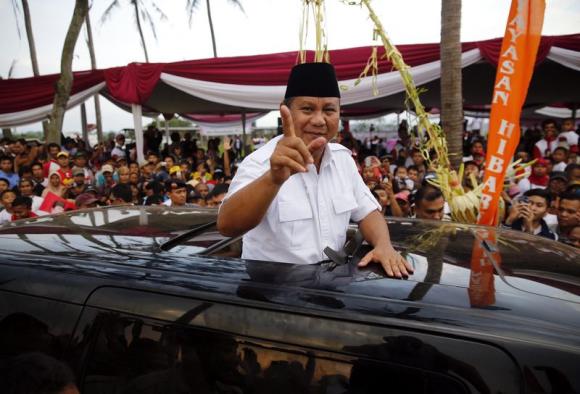 ential candidates have pledged to increase the amount of farm land to improve self sufficiency, although previous such plans by Asia's top importer of wheat and a major buyer of other grains and edibles have often stumbled.
ential candidates have pledged to increase the amount of farm land to improve self sufficiency, although previous such plans by Asia's top importer of wheat and a major buyer of other grains and edibles have often stumbled.In the case of rice, a high-profile attempt by former autocrat Suharto to restore Indonesia's self-sufficiency in the 1990s under Central Kalimantan's Mega Rice Project on Borneo island proved disastrous due to the ill-suited peat land soil.
The rich volcanic soil on Java can support up to three rice harvests a year but land is running out on the densely populated central island of the archipelago. Indonesia plans to import at least half-a-million tonnes of rice this year.
Pawan Kumar, an analyst at Rabobank International, said rice and corn offered the best opportunity to increase production, mostly through improving yields given a scarcity of land.
"But commodities like soybeans, wheat and sugar would be more challenging," said Kumar, citing the cost of land conversion and cultivation compared to cheaper imports.
Indonesia's agro-food imports have more than quadrupled in a decade to about $18.4 billion in 2013, according to the Organisation for Economic Cooperation and Development.
Indonesia has to import all its wheat, with rising wealth encouraging people to eat more bread, noodles and fast foods.
But unless it lifts output of soybeans, corn, sugar and rice Indonesia will have to rely on imports from places such as Australia, the United States, Brazil and Thailand.
President Susilo Bambang Yudhoyono introduced self-sufficiency targets in 2009 after food prices soared, but many have not been met partly due to red tape and corruption scandals over import quotas that caused shortages for food such as beef.
His administration also tried to encourage a greater use of home-grown cassava to replace rice in meals.
In Yudhoyono's second term, agricultural land only rose by 700,000 hectares, well below a target of 2 million hectares, Agriculture Minister Suswono told Reuters. Indonesia has less available agricultural land than many countries. According to the OECD, agricultural land covers about 53.6 million hectares, or around 30 percent of the total land area.
The two contenders to replace Yudhoyono have also made promises to increase food production, though they have given few details. Front-runner Joko Widodo has said he will fix damaged irrigation systems to open up 3 million hectares of agricultural land if elected on July 9.
His rival, ex-general Prabowo Subianto, has said he would open up 2 million hectares of new land for rice, corn, soybeans and sugarcane, that he says will also provide 12 million jobs.
Agriculture policy will be among issues discussed by the presidential candidates during a televised debate on July 5.
DEBATING AGRICULTURE
Agriculture accounts for about 15 percent of GDP in Southeast Asia's largest economy and around 35 percent of the population depend on it as their main source of income.
But much of sector remains deeply inefficient. Almost 40 percent of fresh fruit and vegetables spoil before reaching market, according to one industry group.
In addition to a lack of land and investment, water shortages, poor infrastructure and land rights issues are also blamed for limiting improvements in agriculture.
To protect domestic farmers, the government also imposes limits on some imports and trading of food staples, which has been criticized by consumers and international trading partners.
With both candidates having spoken in favor of protectionism, there are also concerns over the environment for overseas investment that could modernize the small-holder dominated agriculture sector.
International agribusiness giants such as Cargill [CARG.UL] and Olam International have been expanding in Indonesia and could do this faster with fewer import curbs.
Andrew White, managing director of the American Chamber of Commerce in Indonesia, said he was expecting the new government to work on striking the right balance between imports and locally grown produce, although obstacles remained.
"Clear implementing regulations have yet to be issued and land acquisition and permitting remains a key stumbling block."
Indonesia was once self-sufficient in rice and sugar, but like many other food crops, output has gradually fallen due to competition for farmland from either cash crops like palm oil or for housing as the population booms.
Early last year, the agriculture ministry drafted a regulation to stop agricultural land, mainly rice paddies, being converted for industrial or housing use but it is yet to be signed by the president and remains in limbo.
Some ministers have been pushing to allow in genetically modified crops to increase output, but the approach has not so far got enough support within government.
Abah Ofon, an analyst at Standard Chartered, said self-sufficiency was a key goal due to risks from food price spikes.
"For Indonesia there definitely is a need to boost self-sufficiency. How you go about this, is open to question."







